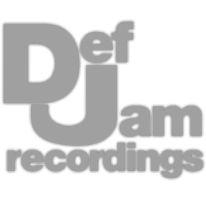Professional Analog Mastering.
Professional Analog Mastering.










When trying to achieve a clear mix, it's best to emphasize the high-frequency range while ensuring that the lows and mids are balanced. You can make your mix clear with exciters, equalizers, and frequency-specific compression, but some techniques like inverse equalization can also be very helpful.
Inverse EQ Matching is one of my favorite tricks when mixing since it lets me quickly separate two clashing signals. What I do is match the two signals that I want to separate, highlight all of the bands that were created to match the signals, and then invert their gain.
Now, everything that made them nearly identical has been reversed, causing a greater difference between the two frequency responses. Let’s take a listen.
If you very subtly pan your kick and bass, you create a little space for each. With the bass, a few ticks to the right and kick a few to the left, the energy isn’t as centered and the 2 instruments are competing with one another to the same extent.
Try not to go over 5 ticks when using this technique, or your mix may end up sounding like an old stereo Beatles record.
Let’s take a listen.
Downward expansion or gating has more applications than cutting out background noise - it can be used to greatly increase dynamics and reduce muddiness. If used on the bass frequencies, you can attenuate unwanted lows whenever the bass falls below the threshold, and control the timing with the attack and release.
This ensures that the bass is most powerful when loud enough, yet doesn’t linger causing a boomy or muddy low end.
Let’s take a listen
Exciters create high-order harmonics that can brighten up an instrument or mix; one good plugin for this is Fresh Air by Slate digital - a free plugin that simultaneously amplifies high frequencies and excites them. This plugin can be pretty aggressive though, so use it sparingly.
Other exciters like the Waves Aural exciter will work similarly and create a clear signal.
Although somewhat basic, high pass filters can really help add clarity to a mix, especially when used amongst multiple instruments. For example, an acoustic guitar should often have a low-pass filter set above 100Hz, reducing boomy frequencies, mic rumble, and more unwanted aspects of the signal.
The same could be said about lead vocals, and many other instruments, so don’t forget to use this simple but incredibly effective filter.
Let’s take a listen.
One creative way to add some clarity to your mix is with New York Style parallel compression - with which you heavily compress an auxiliary send, then equalize that heavily compressed signal before you blend it back in. With the EQ amplify a high shelf filter to take the details of the high end and boost them.
This setup will both add detail and body to your mix or instrument, and add clarity with the high-shelf filter.
Let’s take a listen.
Another easy but often overlooked way to add some clarity to a mix is to process your instruments with an airband. This brightens, clarifies, and adds a delicate quality to your vocals, acoustic guitars, or any instrument with high frequencies or high order harmonics.
The Maag EQ offers a great airband for this purpose, which extends to 40kHz.
Let’s take a listen.
If you want to bring out the detail of the high frequencies, maybe on your drum or guitar bus, create an auxiliary send on which you place an EQ and an upward compressor. With the EQ, set a high-pass filter to exclude the lows.
Then use the upward compressor to increase the detail of only the high-frequency signal, in turn, add a lot of clarity to your instrument or bus.
Let’s listen to it.
If you want a clear mix, you need to preserve your high frequencies - this is why you should use oversampling to avoid aliasing and the phase cancellation that aliasing will cause. If a plugin offers it, use some oversampling, especially when saturating or heavily compressing high frequencies.
This way aliasing distortion is minimal and your high frequencies don’t have a somewhat comb filtering effect.
Let’s take a listen.